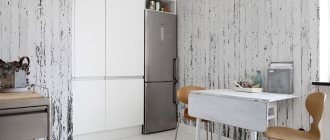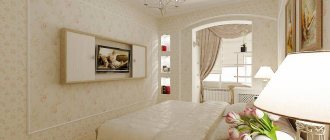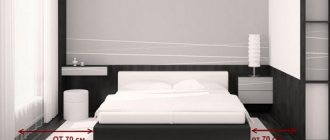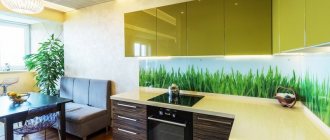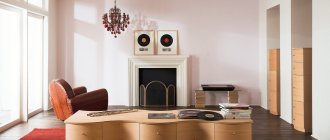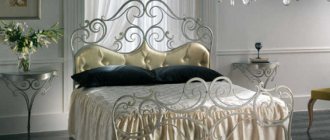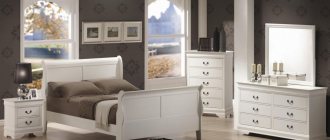High-tech and minimalism styles continue to be actively used in the manufacture of furniture and the creation of interiors for residential premises. However, more and more often we hear that these trends have no soul - they extol technical perfection and utilitarianism too much, leveling people.
In the age of worldwide networks and general digitalization, many want to see “furniture with a human face.” Partly this is the need for comfort and warmth, partly it is nostalgia for the times when grandmother’s chest of drawers and grandfather’s closet were companions of a carefree childhood spent in the village. Therefore, today aged furniture is produced both in factories and at home.
Instructions for brushing wood yourself
- First, you need to wet the pre-prepared raw materials, which in turn will help avoid unplanned scattering of cod and other elements, including dust. At the first stage, you should test the surface of the sample for roughness using a metal brush with wire bristles. Such a brush should have hard bristles, this is important for sawing off the upper fibrous layers from the product. It should not damage the elastic layers of wood, since brushing was invented because of their beauty. The tool must be moved along the growth of the fibers at a steady and measured working pace in order to qualitatively finish the workpiece.
Losing the uniform rhythm and increasing the number of revolutions of the brush can lead to negative consequences, such as unwanted baking of the wood. Experts recommend choosing an individual working pace for each work sample. When work is done using simple hand tools, you can easily determine the optimal speed for processing the workpiece. It's no secret that working manually will be quite labor-intensive and hilarious.
- Once the initial hard sanding is completed, it is recommended to change the brush to a polymer-type abrasive-coated attachment and then move on to a new sanding stage to eliminate fibrous residues and other roughness from the surface of the workpiece. Upon completion of what has been started, when the wood material is completely sanded, one can judge the quality of the work, as well as trace the full depth of the structuring carried out.
If you are not satisfied with the final result, you can slightly deepen the grooves formed on the surface of the product, but you should be careful and do the deepening without annoying fanaticism. This stage will be appropriate for arranging additional decoration on the workpiece: using a chisel you can make indentations of natural shapes. Upon completion of the initial grinding, they need to be slightly adjusted to make the newly formed cracks more realistic and similar to natural ones.
- An attachment with a very appropriate sisal brush is useful for final polishing work on wood. She will take care of giving the material additional gloss, charm and uniqueness. If you have to process the workpiece manually, you should try your luck with fine-grained sandpaper; it will give the surface a perfect smoothness. Next, the product is prepared for painting or varnishing; for this, it is thoroughly dried and dust is removed.
- To obtain a special touch of luxury and nobility of wood material, patination is applied to it - painting deep cracks with the darkest tones possible. When stain is applied liberally to the work surface, areas with soft fibers will quickly absorb the paint, while areas with hard fibers will remain untouched. Excess paint must be removed. Gold paint looks great against the background of natural wood, so its shimmer from microcracks will not be out of place. Upon completion of coloring with a pigment composition, the workpiece is polished to smooth out any irregularities that arise during the process.
- Varnishing of wood material is carried out after thoroughly cleaning and drying it. Brushed parquet elements are coated with a special varnish so that they retain their original appearance for as long as possible.
Features of finished aged furniture
If you are not a fan of working with your own hands, then the best option would be to purchase furniture in showrooms and other retail outlets, or choose custom-made furniture.
Today, many furniture factories, as well as small private workshops, produce small-scale or even unique antique furniture, taking advantage of all the advantages of industrial technologies. When making antique furnishings, several techniques are used.
Selection of materials
A carefully polished board or beam of the correct geometric dimensions becomes faceless and can be used anywhere. The first and most obvious step to achieve a vintage effect is to use materials that have their own “character”, bear the stamp of time, and also correspond to the style of those times when furniture production did not yet have precision machines and woodworking equipment.
Accordingly, the products turned out to be somewhat clumsy and rough (at least when we are talking about the Middle Ages).
The word “vintage” comes from winemaking - it means the advantage of vintage wines aged for several decades over younger products. In clothing, design, and furniture, this means the revival of stylistic traditions of previous eras.
For example, putting a bureau in the office instead of a comfortable closet or desk, and in the bedroom - a high bed with nickel-plated balls - is clearly vintage.
In order to achieve the effect of aged furniture, parts of wood are taken to make it, in which uneven edges, knots, structural defects are preserved - all these elements imitate handmade work.
.
.
This technique is especially often used in the manufacture of countertops - during assembly, instead of the usual glued solid wood, slabs are taken, which have a unique pattern and shape. We can say that the table is not just aged, but also exclusive.
Expert opinion
Kokovin Dmitry Vasilievich
Furniture restorer
Slab is the name for cutting a tree (usually longitudinal), when the trunk is not cleared of bark and retains its natural shape - bends, knots, splits and other elements that are usually removed during factory production.
Chemical exposure
Furniture production has chemical reagents at its disposal that act on wood in a special way. They damage the top layer of cellulose, but do not act on all surfaces, but form grooves, furrows, spots and other “artifacts”.
The destruction of part of the wood mass imitates time damage, and the unique pattern makes the product unique. Using chemical action, you can even imitate the impact of wood-eating insects, only preserving the strength of the product and making such wear aesthetically pleasing.
Application of forged elements
Aged furniture is not only wood, but also metal parts that were actively used in the 16th – early 20th centuries. An indicator of the advanced age of the furnishings are forged hinges, edging, and corners. Forged dark hinges, handles, and locks are widely used.
Features of brushing
This is one of the most modern and fashionable ways to show how to age natural wood furniture. Medium-density wood is suitable for processing using this method - walnut, coniferous species, oak - it is this that provides a pronounced and very beautiful pattern of the treated surface. The name “brushing” comes from the English word brush: using special metal brushes, the surface is mechanically processed. Most often, the method is used to create interior items in country or Provence style.
The structure of the wood is heterogeneous; dense fibers alternate with looser ones, forming a unique pattern. Under the influence of time, the soft areas are destroyed, giving the tree relief. Today this process can be significantly accelerated, obtaining the desired aging effect in a very short period.
The surface is simply processed in several stages. First, hard metal brushes are used, which rid the wood of soft and loose fibers. The dense texture becomes distinct, and growth rings appear. Then they pass over it with special nylon brushes with abrasive inclusions, which remove roughness. For work, you can use a grinding machine, a drill with special attachments, or a milling cutter.
Wood that ages under natural conditions becomes brittle, loses elasticity, and cracks. Artificial aging of the product allows you to preserve the strength and all the properties of new wood using modern compounds.
The last stage is polishing using sesal brushes or thick felt. After this, the surface is primed and treated with the desired tint compositions, which further emphasize the beauty of the design. It is possible to cover the protruding parts of the surface with a dark stain that contrasts with the light color of the soft fibers. This technique will visually enhance the aging effect. The final varnish coating protects the surface from external influences and adds shine and gloss to it. Brushed boards are great for making antique furniture with your own hands. If necessary, products aged using this method can be returned to their original appearance by simply cleaning the surface.
Types of furniture staplers, their features and scope of application
Hard metal brush
Nylon brush with abrasive inclusions
Sesal brush
Aging process
There are several particularly popular types of aging wooden products. It’s worth understanding their features before decorating your favorite old furniture. To enhance the effect, you can paste over the elements of the product using the decoupage technique; these design trends combine perfectly with each other. It must be remembered that the surface must first be thoroughly cleaned of the old coating, the fittings removed and the product primed. Sometimes handles, hinges and other decorative elements have to be replaced because they do not match the chosen style.
Making a cabinet for a balcony with your own hands, master classes
| Aging technique | Necessary materials | Tools for work | Stages of implementation | The resulting effect |
| Crackle | Special 1 or 2 phase craquelure varnish | Brushes with synthetic bristles, protective gloves | Varnish is applied as a finishing layer to a painted or varnished surface. | A network of cracks appears. Their depth depends on the thickness of the applied varnish layer. Suitable for wood, plastic, chipboard. Bronze or silver paint is often rubbed into cracks to enhance the effect. |
| Patina | Performed using acrylic, bitumen, wax, shellac, stain | Soft brushes for applying a layer of patina, rags for rubbing | The product chosen for patination is applied with light strokes to a previously painted and dried surface. Without waiting for complete drying, rub it in with a rag. | The appearance of many years of use and significant wear of the paint is created. Suitable for wood, chipboard, decorative metal elements |
| Coloring | Several different colors of acrylic paint or shades of stain | Soft brushes for applying compounds, sandpaper, rags to remove dust | The first layer of paint is applied with light strokes so that the wood texture is visible. After drying, lightly sand with sandpaper. The procedure is repeated with several different coating colors. | There is an effect of multi-layer coloring and many years of use of the item. This is the best way to age furniture in the Provence style. Choose pastel paint |
| Effect of artificial pollution | Hard dark wax | Apply by hand to protruding areas of the surface with small strokes in one direction along the grain | After application, go over the surface with a thick cloth | Getting into cracks on the surface, colored wax creates the illusion of many years of dirt |
Of course, in order for the furniture to turn out beautiful, stylish, and look truly antique, you should use high-quality materials and tools. You need to first study all the nuances of its manufacture and choose a style that will connect all the elements of the decor into a single interior composition. And the process of radically changing old products and restoring them to a new quality is very exciting and very budget-friendly, while at the same time allowing you to diversify a boring environment. After such decoration, old cabinets, chests of drawers, and shelves will fit perfectly into the fashionable interior.
Crackle
Patina
Coloring
Effect of artificial pollution
Brushing wood - tips from an experienced carpenter
Kremlev Andrey Aleksandrovich production manager
Brushing wood is its artificial aging
, produced carefully, painstakingly and sometimes taking a lot of time and effort. But looking at the end result, we can confidently say that it’s worth it. This is exactly the case when “old age” brings extraordinary joy and transformation! Creates coziness, comfort, harmony with nature.
Purchasing antiques, furniture, kitchen utensils, antique decoration, antiques, mirror and picture frames has always been an expensive and costly endeavor. Only collectors, celebrities and wealthy people could just buy a table from the last century, a baby's cradle, chairs, etc., paying huge sums of money.
What will you learn about in the article?
- The evolution of artificial aging
- So, why do you need wood brushing?
- There are several methods of artificial aging
- Rough processing
- How to Sand a Textured Surface
- How to age wood by painting
- Final finishing - polishing and varnishing of the surface
- Chemical method
- Safety comes first
The evolution of artificial aging
Years change, technologies change, but the craving for antique accessories and utensils remains unchanged. Now everyone can afford the luxury of living in an old Russian mansion, with cracked, seemingly shabby walls and beams, furniture from those times, wooden benches and a dining table made of natural aged wood. And all this thanks to the wood brushing process
.
We constantly feel a craving for something new, observing the natural, natural processes of aging wood, the visual end result, the demand for such items, people decided to achieve a faster process of extinction of the life of wood and invented their own technology of artificial aging with a fairly short period of time.
Photo 1. Regular larch planken wood
Photo 2. Aged planken wood grade BC (C)
Photo 3. Primer with pigment for brushed larch
Photo 4. Finish painting of brushed planken wood with varnish
So, why do you need wood brushing?
Currently, this is a fashion trend, with a lot of followers, with genuine envy and a desire to have such things in their homes. Designers are those representatives who do not limit their fantasies and ideas within certain limits. They create masterpieces of art, their appearance reminiscent of exotic varieties of trees, worth fabulous investments, but in fact these are quite affordable and ordinary materials for anyone who wants to buy them.
Wood brushing technologies are capable of any transformation and color from dark chocolate to gray-green
, as if covered with dust and mold from age and time, with visible veins and cracks, roughly hewn, with chips or eaten away by beetles, with gold embossing or silvering, with noticeable wood pores and even imitation of cobwebs, any tones and colors.
Photo 5. Finished wood brushing
The process of brushing wood has found recognition in the manufacture of “antique” furniture, the creation of a certain decor, when taking into account the interior of restaurants, cafes, antique stores, museums - huts and even in the decoration of apartments, houses and floor coverings - parquet.
Brushing
literally translated from English
means “brush” or “cleaning”
. And for us this is tree structuring. Under natural conditions, aging occurs over a long period of time, under the influence of sun, wind, rain, and the surface of the trunk wears unevenly, so the less durable layers dry out and fall out, leaving hard, deep layers.
Natural phenomena, aging wood, undermine its vitality, and brushing technology, on the contrary, increases the strength, reliability and durability of the material.
Tree varieties with a pronounced texture pattern and fibrous structure, with medium soft wood in hardness, such as Siberian larch, oak, ash, walnut,
.
The effect and impeccable appearance, brightness and clarity of contrast are based on scraping out the softer layers and completely removing them.
Photo 6. Aged larch plank
But we would like to note that WITHOUT subsequent coloring or tinting, the brushing process will seem unfinished, scanty, and completely tasteless.
There are several methods of artificial aging
Mechanical restoration
The whole process consists of:
- pre-treatment of the top layer with metal brushes;
- sanding with coarse sandpaper or a polymer abrasive brush;
- by applying paints or stains to complete the look of aged wood;
- varnish coating in several layers, and before each new layer, sanding with fine sandpaper is required.
The work is done manually or using an electric drill, a brush router, a machine with various devices, in the form of brushes: aluminum, steel and copper, as well as synthetic bristles for polishing and grinding the surface.
Rough processing
To remove soft fibers, make movements according to their growth. Try to maintain the same “speed limit” for the entire surface of the tree. To avoid damaging the pattern of annual rings, do not press too hard on the brush.
, to avoid the formation of deep scratches and pits.
Craftsmen, to create a style and era, resorted to rough processing by applying notches and chips on the surface of the product. This practice is used only on large, bulky items. We use similar experience in working with planken and imitation timber to create decorative panels for interior decoration.
Don't forget about lighting when working - direct the light across the fibers.
Photo 7. Stage 1 - pre-treatment of the top layer with metal brushes
Photo 8. Rough processing of the top layer - “Before” and “After”
The workpieces are dried to a moisture content of 14–16%. In other cases (when the wood is soft), you can not use metal brushes, but use a universal one made from polymer-abrasive components.
How to Sand a Textured Surface
Sanding removes “rags” and residual lint. If there are protruding parts on the surface of the material, then hard grinding is prohibited; this can ultimately lead to damage and broken parts; use soft aluminum or abrasive brushes. When sanded, the wood surface acquires a pleasant tactile quality.
How to age wood by painting
Well, when we have given the desired surface relief, reminiscent of past centuries, it is necessary to consolidate and strengthen this by applying paint. Say what you want, but fresh wood, even with traces of burnout and decay, looks somehow ridiculous, as if it was not completely burned. A variety of colors and shades will help us radically change the appearance of the surface.
. The wood will take on a completely different, chic and presentable look, the contrast between the layers will amaze you!
Photo 9. Applying a primer with pigment to aged larch
The most affordable way is to use stain
, followed by wiping with a rag. The whole effect is that the composition is instantly absorbed into the soft fibers, when the hard layers do not have time to be saturated with paint. When a pattern is revealed, it takes on a stunning pattern and texture. If you wish, then add any paint, gilding, silver, just be sure to treat the surface with a spatula or rag, this will remove excess paint.
If you decide to make shelving, tables and countertops from aged wood, so that debris and crumbs do not get into the cracks and holes, treat the surface with a transparent putty, but only after treating it with a stain-primer.
Final finishing - polishing and varnishing of the surface
To give the surface a finished and finished look, the final finishing stage is necessary, this is the application of wax, varnish and final polishing. For application, regular acrylate varnish is suitable (an excellent option), and if you are ready to implement bold ideas, then professional craquelure varnish, which produces many small cracks, into which we subsequently manually rub paint or coal dust and that’s all, you can congratulate you on creating a unique design.
Several photographs of the finishing layer of varnish applied to aged larch plank wood in grade BC (C)
Photo 10. Varnishing the surface of aged larch
Photo 11. Finish painting of aged wood with varnish
Chemical method
They are produced to facilitate the process of removing soft fibers, practically without the use of mechanical force. Chemical solutions have the ability to dissolve or soften wood fibers. Acids and some alkaline compounds are used. If you use products with a high concentration of active substances, then do without further use of brushes, just apply and rinse off the solution in several passes.
Work on this method must be carried out in the open air, as harmful and pungent odors are released.
All further processing is carried out in the same sequence as during mechanical finishing.
Safety comes first
• mandatory protection of the organs of vision and smell with special protective equipment; • wear gloves; • observe safety when working with power tools from electric shock and rotating elements of mechanisms.
We will be glad if our article was useful.
See how we can
January 28, 2020598
Vintage style in the interior of a private house
The customer, a man of taste, decided to create an unusual project, and our team helped him with this, making a finish from simple, coniferous material that would be the envy of all the neighbors
Vintage style in the interior of a private house
January 28, 2020
598
October 30, 2019722
How we made a vintage terrace in the very creative village village
A very beautiful, vintage terrace in the village village. The style of the house suggested that the solution for the terrace should be unusual and original. That's what we did. We invite you to look at our new facility on the pages of the LesoBirzha website.
How we made a vintage terrace in the very creative village village
October 30, 2019
722
March 22, 2019401
Panning of wooden furniture in the LesoBirzha workshop
Artificially
aged objects
can be proud of their “old” new life.
This is the rare example when “aging” is a joy and gives owners great satisfaction, acquires large-scale, widespread use, when every crack, notch, chip, abrasion causes indescribable delight and a flurry of emotions. Panning of wooden furniture in the LesoBirzha workshop
March 22, 2019
401
07 February 20182208
Brushed imitation timber in gray color
Brushed imitation timber in gray color.
Gray tint on aged wood is a favorite combination among lovers of brushed finishes. In our workshop, a number of works have been carried out to transform an ordinary imitation larch beam into a real work of art. Interesting work, the result of which we would like to share with our readers.
Brushed imitation timber in gray color
February 07, 2018
2208
View other works
Aging furniture for shabby chic style
Stock up:
- light wax sticks;
- white acrylic paint;
- synthetic flute brush;
- sandpaper or abrasive stone.
Step-by-step instruction:
1). Wash and wipe the item using alcohol. Prime with PVA glue.
2). Rub the end part in some places with wax sticks.
3). Using a flat brush or roller, paint the table white, gradually in 3 layers.
4). Decorate the dried surface with paintings.
5). Partially remove the paint layer, creating scuffs.


